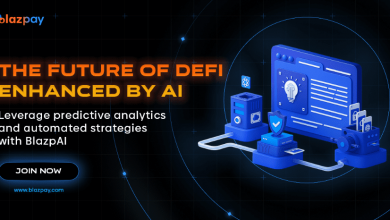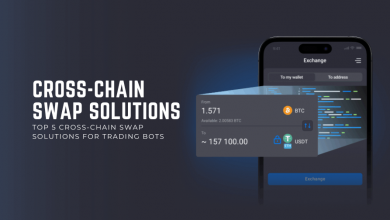From Algorithms to Impact: Olumuyiwa Elegbede’s Playbook for Next Generation Performance Marketing

Marketing, once a discipline of catchy jingles and clever billboards, has matured into an exacting science of connection, one that must remain human at heart even as the machines get smarter.
For senior marketing executive Olumuyiwa Elegbede, marketing is “the art of forging meaningful connections by solving genuine customer challenges.” It is a conviction that has guided him across every emerging channel and shiny platform, reminding him that tools may change, but human motivations rarely do. In a world where every swipe is traceable, every preference quantifiable, and every purchase path compressed into a handful of taps, the true differentiator is no longer data alone, but the deliberate orchestration of that data to create genuine value.
Elegbede argues that the future belongs to marketers who can fuse precision, privacy, and purpose, all while keeping a relentless eye on commercial performance.
A Six‑Year Sprint: Turning Intent into Revenue at Scale
Across a career spent inside fast‑moving UK technology firms, Elegbede has honed a singular obsession: performance marketing must convert intent into revenue instantly, intelligently, and at scale. During his work at Heveloon, he engineered Google Ads and accelerated mobile‑app adoption by organisations and B Corp businesses looking to expand internationally.
At Vidi‑Corp Ltd., his targeted SEO and SEM implementation adapted dynamically to live behavioural signals, driving a 2.6× increase in monthly recurring revenue (MRR) while sustaining a sub‑10 % churn rate, a critical metric for any subscription business.
It is the granular wins, testing subject‑line sentiment, sequencing value propositions, and iterating on creative in two‑hour sprints that paint the full picture. “Performance marketing,” he says, “is like distance running with a Formula 1 pit‑stop crew. You need the stamina to stay focused and the agility to change tyres at 200 mph.” That mentality, equal parts endurance and speed, underpins his broader strategic thesis.
The Core Thesis – Precision, Privacy, and Sustainability
As an Associate Member of the Chartered Institute of Marketing (ACIM), Elegbede distils his operative worldview into three intertwined pillars:
- AI‑Powered Precision: Machine learning elevates segmentation from demographic buckets to probability distributions, predicting not only who will buy, but why and when.
- Privacy‑First Design: Trust is the ultimate conversion metric. With regulations tightening, brands must make privacy a feature, not a footnote.
- Sustainability‑Conscious Media: Media investments increasingly carry a carbon cost. Efficient, low‑emission campaigns are the next frontier of responsible growth.
“Algorithms may whisper,” he notes, “but strategy must sing, and that song needs lyrics about ethics, impact, and measurable authenticity.” After thousands of hours at the junction where creativity meets code from nurturing streaming start‑ups to orchestrating multinational rollouts across three continents, Elegbede has identified five industry flashpoints and developed pragmatic, profit‑ready remedies.
Olumuyiwa Elegbede’s Industry Diagnosis and Recommendations
1. Hyper‑Fine Personalisation at Ethical Scale
The Challenge: The cookie apocalypse is here. Third‑party identifiers are disappearing from Chrome, Safari, and an array of programmatic exchanges. Yet consumer expectations for relevance have never been higher; 74 % of UK shoppers say they become “frustrated” when digital content seems irrelevant to their needs (YouGov, 2025). How can brands maintain the empathy that personalisation promises without trespassing on individual privacy?
The Opportunity: Elegbede predicts that probabilistic identity resolution, blending first‑party data with contextual signals, device graphing, and on‑device federated learning, will be table stakes by 2027. He cites internal benchmark studies indicating that marketers who deploy such privacy‑preserving clean‑room environments outperform their peers by ≈34 % in conversion lift.
“Privacy is the new loyalty programme; treat it with the reverence you once reserved for brand equity.”
Quick Fix:
- Secure executive buy‑in for a first‑party data strategy that includes value exchange (e.g., loyalty perks, exclusive content) in return for consent.
- Evaluate cloud providers that offer differential‑privacy frameworks, which inject mathematical noise, safeguarding individual identities while preserving aggregate accuracy.
- Establish privacy councils made up of legal, data science, and CX leads to vet new use‑cases before code touches production.
Real‑World Example: A mid‑tier UK grocery chain implemented federated analytics across its mobile app, training product‑recommendation models on‑device. The result? A 21 % uplift in basket size with zero personally‑identifiable information (PII) ever leaving the customer’s phone.
2. Generative AI’s Creative Renaissance, And Regulatory Reckoning
The Challenge: Generative AI can now draft headlines, animate shoppable reels, compose product copy, and even remix existing visuals into entirely new formats. Gartner estimates that by 2026, 55 % of top‑performing EMEA ad creatives will rely on AI‑assisted generation. But the UK’s Digital Markets, Competition and Consumers Act is already signalling tighter disclosure rules around AI‑generated advertising, with potential fines for opaque practices.
The Opportunity: Brands that combine AI speed with human nuance can increase creative throughput by 5× while maintaining, or even improving, brand coherence. Elegbede argues that “automation without accountability is just accelerated irrelevance.” A human‑in‑the‑loop governance layer is therefore non‑negotiable.
Quick Fix:
- Build a triad of checks (ethical compliance, brand safety, cultural resonance) that every AI asset must pass before deployment.
- Use watermarking technologies or content credentials (like C2PA) to certify creative provenance; this can yield programmatic CPM discounts of up to 12 % as publishers price in lower risk.
- Codify red‑line brand rules (e.g., no political references, no negative superlatives) into the prompt engineering stage, preventing costly post‑production edits.
Case in Point: A fintech scale‑up tested an AI‑generated video series explaining APR terms. With a human editor trimming hallucinations and aligning tone, the series achieved a 42 % longer average watch time compared to the agency‑produced control.
3. Voice Commerce Outpaces Social Discovery
The Challenge: Smart‑speaker penetration in UK households surpassed 54 % in late 2024, according to Ofcom. Consumers increasingly rely on voice assistants to reorder pet food, check energy tariffs, and manage grocery lists. Elegbede projects that by mid‑2027, voice‑initiated purchases will eclipse social‑commerce checkouts for everyday FMCGs.
The Opportunity: Screenless moments compress the sales funnel. Brands that surface in the top three voice results capture an outsized share of wallet because consumers rarely ask follow‑up questions. Yet most keyword strategies remain screen‑centric, ignoring how people actually speak.
“In voice commerce, the screenless moment is your entire storefront—make it frictionless or be forgotten.”
Quick Fix:
- Shift from single‑keyword optimisation to intent cluster modelling, grouping phrasal patterns that signal high readiness to buy.
- Deploy natural‑language‑understanding (NLU) models tuned to regional dialects—Mancunian cadence, Glaswegian idioms, Midlands phrasing.
- Build voice‑specific landing flows that auto‑populate carts or offer upsell bundles when the purchase intent is ambiguous (“order pasta” could lead to a selection prompt: whole‑wheat, gluten‑free, or premium).
Stat to Watch: Early adopters already report a +19 % uplift in voice‑search capture after deploying dialect‑aware NLU models, often surpassing gains from traditional SEO overhauls.
4. Carbon Intelligence Becomes a Media KPI
The Challenge: Sustainability has migrated from CSR slide decks to operational mandates. European regulators are moving toward enforced reporting of Scope 3 emissions (indirect value‑chain impact), which includes digital advertising. Agencies now compete on grams of CO₂ per thousand impressions (gCO₂e/CPM).
The Opportunity: Elegbede’s datasets show that low‑carbon ad formats lift brand favourability by ≈11 index points among Gen Z consumers, who increasingly use ecological criteria in purchasing decisions. Carbon‑efficient campaigns can thus double as brand‑equity builders.
“Tomorrow’s marketing funnel filters out both waste and carbon.”
Quick Fix:
- Integrate carbon calculators such as Scope3 or IMPACT+ directly into programmatic bidding engines.
- Prioritise green data centres (powered by renewable energy) when selecting DSPs and CDPs.
- Favour lightweight creative assets (SVG, WebP, compressed HTML5) over heavy MP4 videos, unless necessary for storytelling.
Proof Point: A European fashion retailer migrated 60 % of its display spend to low‑carbon exchanges, reducing emissions per impression by 38 %. Concurrent brand‑lift studies recorded a 9‑point jump in “brand cares about the planet” perception.
5. Measurement Converges on Probabilistic Multi‑Touch Attribution (PMTA)
The Challenge: Signal loss is the new normal. Between iOS ATT, Google’s Privacy Sandbox, and cookie deprecation, deterministic truth sets are shrinking. Traditional last‑click or single‑touch models fail to account for complex cross‑device journeys.
The Opportunity: Probabilistic Multi‑Touch Attribution blends Bayesian inference with incrementality experiments, delivering a defensible view of channel contribution even with 40 % fewer identifiers. Elegbede notes that CFOs are increasingly sceptical of black‑box metrics; marketers must articulate causal impact, not mere correlation.
“If your attribution model doesn’t survive CFO scrutiny, it’s bedtime storytelling, not a business case.”
Quick Fix:
- Implement server‑side tagging to maintain data fidelity and avoid browser‑level disruptions.
- Pair PMTA with geo‑based or audience hold‑out tests to validate directional accuracy. Aim for models explaining at least 85 % of revenue variance.
- Replace opaque vendor dashboards with open‑source frameworks (e.g., PyMC or Google’s Lightweight MMM) that data scientists can audit and tune.
Business Outcome: Brands operating under these principles have trimmed customer‑acquisition costs by ≈22 % while restoring CFO confidence in marketing forecasts, a rare dual win of efficiency and trust.
The Talent Accelerator, Scaling the UK’s Tech Ambition
The United Kingdom’s ambition to be a “tech superpower” hinges not merely on inventing breakthrough algorithms, but on operationalising them ethically and profitably. That requires talent fluent in both the language of code and the grammar of consumer behaviour.
Elegbede embodies this dual fluency. His journey, elevating engagement by double digits, enforcing gold‑standard privacy, and pioneering carbon‑aware media, illustrates how UK marketing leadership can scale globally. “The United Kingdom’s edge lies not merely in inventing technology,” he concludes, “but in deploying it with a sense of shared responsibility, turning local ingenuity into global, ethical prosperity.”



